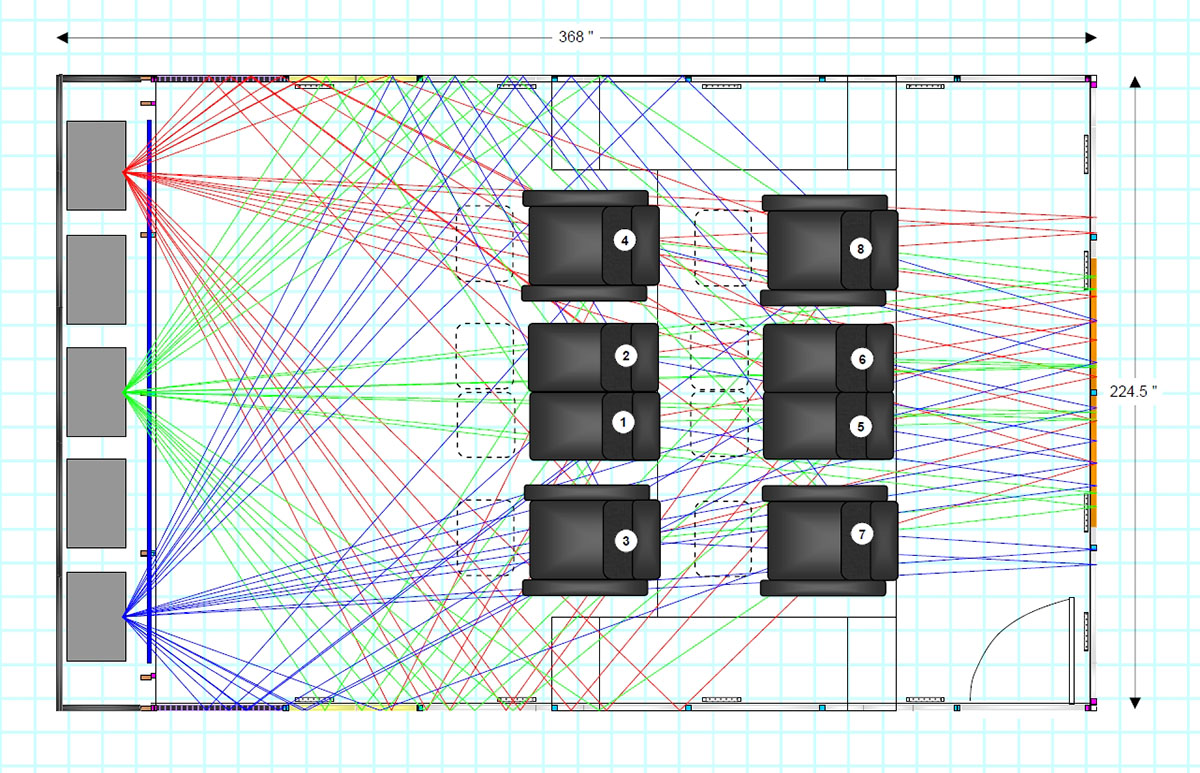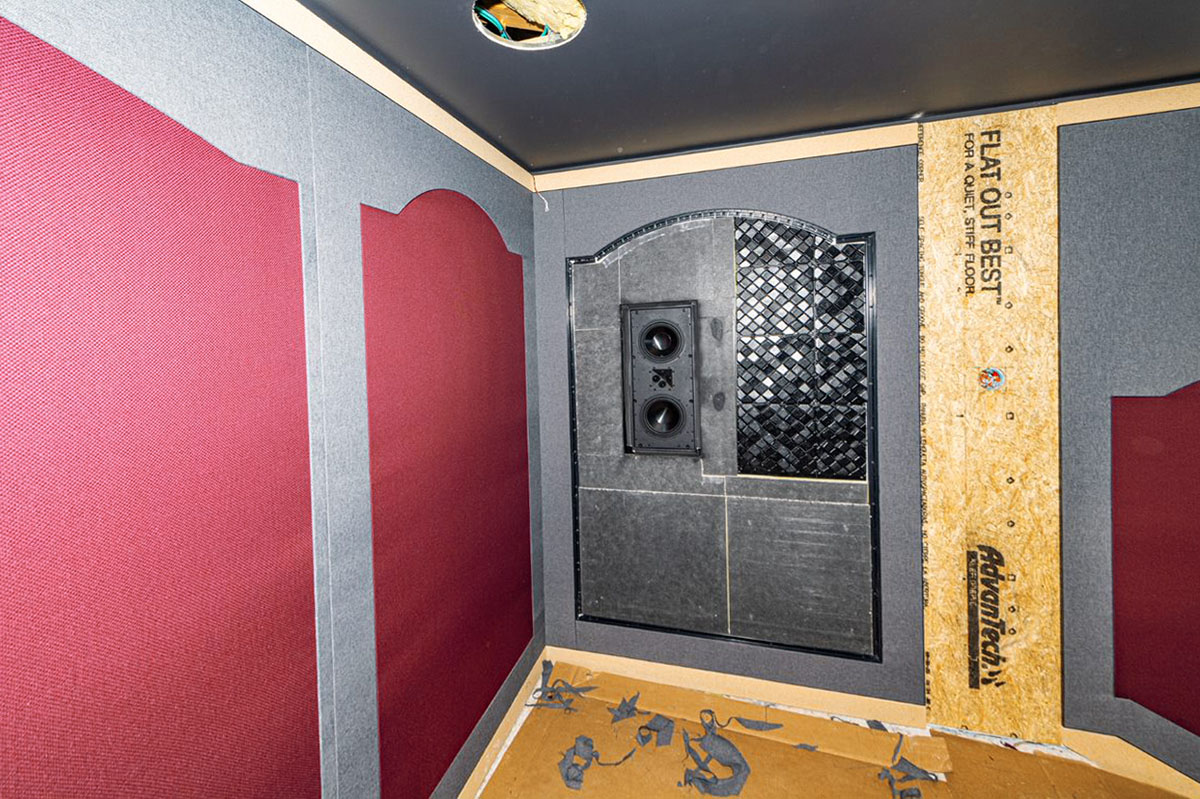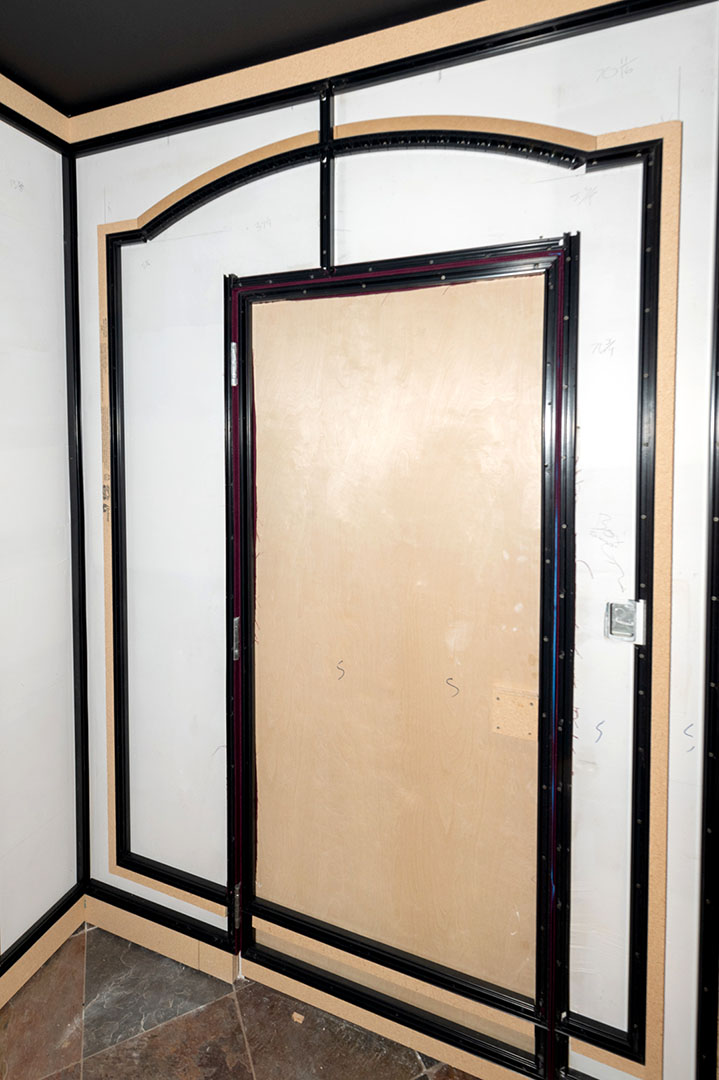A Tsunami of Sound
Pressurize the Room
It is always our intent to unleash a massive amount of sound in the theater rooms we design and build. By its simplest definition, sound is a form of physical energy, and all sound is created by vibration. We believe that cinematic sound, in its finest form, is something that should always be felt, in addition to being heard.
One of the most unique elements about a dedicated cinema room is that we have complete control of how we manage the sound energy in the room. Before we can fully optimize the sound pressure in the room, we must first be certain that we have done everything possible to completely “seal the chamber.” This goes back to what we do with the structural design of the room, in terms of the things we do to create structural rigidity. When you enter the room and close the door, it is as if you have entered an alternate universe, and that is our engineering objective. The sound in the room completely changes, and even before you bring the system to life, you will immediately be aware of the fact that any and all outside sound has disappeared, and the sound inside the room is unlike anything you have experienced before, and this is before you turn the beast loose. I always think that it is the closest thing to an airlock on a spaceship!
Under Pressure
Once we’ve sealed the room, the pressurization process begins. Technically, this is a relatively uncomplicated process. When you put 15+ high output speakers in a 500 square foot space and throw an unholy amount of amplification at it, you are going to get instant sound pressure the moment you “throw the switch.” Big sound is a crucial element in the cinematic experience, which logically includes the use of big speakers and big amplifiers. As a significant side benefit of the covering we use for our acoustic system, we have the ability to conceal these large speakers, such that they are not a visual disruption to the aesthetics of the room in any way.
As for amplification, massive is our preference. Once again, it is completely up to the customer to decide upon the sound level at which they choose to enjoy their theater, but we want to be certain that we give them more than enough power to truly feel the sound. We recently completed a 9.2.6 project which we powered with an enormous 10,000 watts of power. As a comparison, the pick a brand AVR (audio video receiver) in your neighbor’s 5.1 system with a flat panel (not a theater), might have a total amount of continuous power of 500 watts. As another comparison, we could power a small radio station (and not even all that small) with 10,000 watts of transmitter power.
Managing Sound Wave Integrity
Going back to the sound wave, the more energy you put behind it (amplification), the more forceful its energy (vibration) becomes. You step down harder on the gas pedal and it goes faster. Hopefully when you’re in the car and you hammer the throttle you have plenty of open road in front of you. Unfortunately for our precious sound wave, when it is all jacked up on 10,000 watts of power, it is going to crash hard, and quickly. Traveling at 1,086 feet per second, it won’t take it long to travel 30 feet!
We like to use an analogy of atom smashing when describing how to maintain sound wave integrity. We know that sound waves are flying around the room at every angle and bouncing off every surface. These rooms are intended to be highly contained spaces (sealed), utterly saturated with supercharged sound waves. We know that if these rooms are not treated properly (or at all), our old friend distortion will unquestionably join the party as sound level increases. When a sound wave on steroids makes contact with an untreated solid surface, it causes it to deform. Within the industry, the term we use is decay, such that when the sound wave begins to deform, there is logically a resultant change in sound quality.
Our primary objective is soften the blow when our Goliath sound wave hits the back wall, side wall, etc., such that its impact becomes more of a glancing blow than a head-on collision. We want the sound wave to “look” the same after it bounces off the wall as it did prior to contact, and not be broken up into a thousand tiny pieces.
When we manage our sound energy in this way, if offers the homeowner the ability to listen to their massive systems at any volume level they choose and know for certain they will always enjoy a clear, detailed, pristine, distortion free cinematic audio experience. Our expertise in this arena puts us among the most skilled theater builders in the world, and the ultimate performance of our rooms superior to 99% of all home theaters, and 100% of all commercial theaters.
Seal the Chamber. Pressurize the Room.







